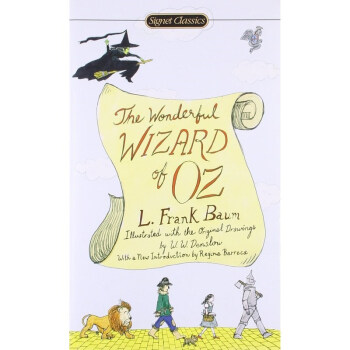![Sense and Sensibility[理智與情感] [平裝]](https://pic.windowsfront.com/19043406/7bffb764-dc1f-429b-8055-1c718432811d.jpg)

具體描述
編輯推薦
美國文學評論巨匠愛德濛·威爾遜說:“在英國文學近一又四分之一世紀的曆史上,曾發生過幾次趣味的革命,惟獨莎士比亞和簡·奧斯丁經久不衰。”《理智與情感》是奧斯丁處女作,與《傲慢與偏見》堪稱姐妹篇。內容簡介
When Mr. Dashwood dies, he must leave the bulk of his estate to the son by his first marriage, which leaves his second wife and three daughters (Elinor, Marianne, and Margaret) in straitened circumstances. They are taken in by a kindly cousin, but their lack of fortune affects the marriageability of both practical Elinor and romantic Marianne. When Elinor forms an attachment for the wealthy Edward Ferrars, his family disapproves and separates them. And though Mrs. Jennings tries to match the worthy (and rich) Colonel Brandon to her, Marianne finds the dashing and fiery Willoughby more to her taste. Both relationships are sorely tried. But this is a romance, and through the hardships and heartbreak, true love and a happy ending will find their way for both the sister who is all sense and the one who is all sensibility.
The Dashwood sisters are very different from each other in appearance and temperament; Elinor's good sense and readiness to observe social forms contrast with Marianne's impulsive candor and warm but excessive sensibility. Both struggle to maintain their integrity and find happiness in the face of a competitive marriage market.
《理智與情感》講述瞭:埃莉諾和瑪麗安兩姐妹生在一個體麵的英國鄉紳傢庭,姐姐善於用理智來控製情感,妹妹卻往往在情感上毫無節製,因此在戀愛中碰到挫摺時,她們作齣瞭不同的反應:姐姐忍辱負重,始終與人為善;妹妹心高氣傲,幾近崩潰……與主人公命運情牽相關的閑得發慌的鄉紳太太,勢利無情的兄嫂一傢,市儈虛僞的遠房姐妹,以及少女心中那三位或道德敗壞或正直優柔的戀人悉數登場。全書以喜劇開頭,悲劇發展,終以喜劇收場,是一則以細膩筆觸和生動對白見長、講述沒有富裕嫁妝的少女婚戀的經典故事。
作者簡介
Jane Austen was born on December 16, 1775 at Steventon near Basingstoke, the seventh child of the rector of the parish. She lived with her family at Steventon until they moved to Bath when her father retired in 1801. After his death in 1805, she moved around with her mother; in 1809, they settled in Chawton, near Alton, Hampshire. Here she remained, except for a few visits to London, until in May 1817 she moved to Winchester to be near her doctor. There she died on July 18, 1817.As a girl Jane Austen wrote stories, including burlesques of popular romances. Her works were only published after much revision, four novels being published in her lifetime. These are Sense and Sensibility (1811), Pride and Prejudice (1813), Mansfield Park (1814) and Emma (1816). Two other novels, Northanger Abbey and Persuasion, were published posthumously in 1818 with a biographical notice by her brother, Henry Austen, the first formal announcement of her authorship. Persuasion was written in a race against failing health in 1815-16. She also left two earlier compositions, a short epistolary novel, Lady Susan, and an unfinished novel, The Watsons. At the time of her death, she was working on a new novel, Sanditon, a fragmentary draft of which survives.
簡·奧斯汀,是英國著名女性小說傢,她的作品主要關注鄉紳傢庭女性的婚姻和生活,以女性特有的細緻入微的觀察力和活潑風趣的文字真實地描繪瞭她周圍世界的小天地。
精彩書評
As nearly flawless as any fiction could be.--Eudora Welty
"In its marvelously perceptive portrayal of two young women in love, "Sense and Sensibility" is Austen's insightful representation of early 19th-century middle-class provincial life. This edition features a new Afterword."
-- Revised reissue.
目錄
INTRODUCTIONCHRONOLOGY OF JANE AUSTEN'S LIFE AND WORK
HISTORICAL CONTEXT OF Sense and Sensibility
SENSE AND SENSIBILITY
NOTES
INTERPRETIVE NOTES
CRITICAL EXCERPTS
QUESTIONS FOR DISCUSSION
SUGGESTIONS FOR THE INTERESTED READER
精彩書摘
Sense and Sensibility, the first of those metaphorical bits of "ivory" on which Jane Austen said she worked with "so fine a brush," jackhammers away at the idea that to conjecture is a vain and hopeless reflex of the mind. But I'll venture this much: If she'd done nothing else, we'd still be in awe of her. Wuthering Heights alone put Emily Brontë in the pantheon, and her sister Charlotte and their older contemporary Mary Shelley might as well have saved themselves the trouble of writing anything but Jane Eyre and Frankenstein. Sense and Sensibility, published in 1811, is at least as mighty a work as any of these, and smarter than all three put together. And it would surely impress us even more without Pride and Prejudice (1813), Mansfield Park (1814), and Emma (1815) towering just up ahead. Austen wrote its ur-version, Elinor and Marianne, when she was nineteen, a year before First Impressions, which became Pride and Prejudice; she reconceived it as Sense and Sensibility when she was twenty-two, and she was thirty-six when it finally appeared. Like most first novels, it lays out what will be its author's lasting preoccupations: the "three or four families in a country village" (which Austen told her niece, in an often-quoted letter, was "the very thing to work on"). The interlocking anxieties over marriages, estates, and ecclesiastical "livings." The secrets, deceptions, and self-deceptions that take several hundred pages to straighten out-to the extent that they get straightened out. The radical skepticism about human knowledge, human communication, and human possibility that informs almost every scene right up to the sort-of-happy ending. And the distinctive characters-the negligent or overindulgent parents, the bifurcating siblings (smart sister, beautiful sister; serious brother, coxcomb brother), the charming, corrupted young libertines. Unlike most first novels, though, Sense and Sensibility doesn't need our indulgence. It's good to go.In the novels to come, Elinor Dashwood will morph into Anne Elliott and Elizabeth Bennet (who will morph into Emma Woodhouse); Edward Ferrars into Edmund Bertram, Mr. Knightley, Henry Tilney, and Captain Wentworth; Willoughby into George Wickham and Henry Crawford. But the characters in Sense and Sensibility stand convincingly on their own, every bit as memorable as their later avatars. If Austen doesn't have quite the Caliban-to-Ariel range of a Shakespeare, she can still conjure up and sympathize with both Mrs. Jennings-the "rather vulgar" busybody with a borderline-unwholesome interest in young people's love lives, fits of refreshing horse sense, and a ruggedly good heart-and Marianne Dashwood, a wittily observed case study in Romanticism, a compassionately observed case study in sublimated adolescent sexuality, and a humorously observed case study in humorlessness. "I should hardly call her a lively girl," Elinor observes to Edward, "-she is very earnest, very eager in all she does-sometimes talks a great deal and always with animation-but she is not often really merry." Humorlessness, in fact, may be the one thing Marianne and her eventual lifemate, Colonel Brandon, have in common. (Sorry to give that plot point away; it won't be the last one, either. So, fair warning.) The minor characters have the sort of eidetic specificity you associate with Dickens: from the gruesomely mismatched Mr. and Mrs. Palmer to Robert Ferrars, splendidly impenetrable in his microcephalic self-complacency. The major characters, on the other hand, refuse to stay narrowly "in character"; they're always recognizably themselves, yet they seem as many-sided and changeable as people out in the nonfictional world.
Elinor makes as ambivalent a heroine as Mansfield Park's notoriously hard-to-warm-up-to Fanny Price. She's affectionately protective of her sister Marianne yet overfond of zinging her: "It is not every one who has your passion for dead leaves." She's bemused at Marianne's self-dramatizing, yet she's as smug about suffering in silence as Marianne (who "would have thought herself very inexcusable" if she were able to sleep after Willoughby leaves Devonshire) is proud of suffering in Surround Sound. She can be treacherously clever, as when Lucy Steele speculates (correctly) that she may have offended Elinor by staking her claim to Edward: " 'Offended me! How could you suppose so? Believe me,' and Elinor spoke it with the truest sincerity, 'nothing could be farther from my intention, than to give you such an idea.' " Yet she can also be ponderously preachy: "One observation may, I think, be fairly drawn from the whole of the story-that all Willoughby's difficulties, have arisen from the first offense against virtue, in his behaviour to Eliza Williams. That crime has been the origin of every lesser one, and of all his present discontents." (In the rest of Austen, only the intentionally preposterous Mary in Pride and Prejudice strikes just this note: "Unhappy as the event may be for Lydia, we may draw from it this useful lesson; that loss of virtue in a female is irretrievable . . ."). Is Elinor simply an intelligent young woman overtaxed by having to be the grown-up of the family? Or is she an unconsciously rivalrous sibling, sick of hearing that her younger, more beautiful sister will marry more advantageously? Or both? Or what? It's not that Austen doesn't have a clear conception of her-it's that she doesn't have a simple conception. Elinor is the character you know the most about, since Austen tells most of the story from her point of view, and consequently she's the one you're least able to nail with a couple of adjectives or a single defining moment.
Edward bothers us, too. He's a dreamboat only for a woman of Elinor's limited expectations: independent-minded yet passive and depressive, forthright and honorable yet engaged in a book-long cover-up. (It's a tour de force on Austen's part to present a character so burdened with a secret that we see his natural behavior only long after we've gotten used to him.) At his strongest and most appealing-to Elinor, at least-he's a clear-your-mind-of-cant kind of guy: "I am not fond of nettles, or thistles, or heath blossoms. . . . A troop of tidy, happy villagers please me better than the finest banditti in the world." But he can also be a Hamlet-like whiner, complaining about his own idleness and vowing that his sons will be brought up "to be as unlike myself as possible. In feeling, in action, in condition, in every thing." For my money, Edward is the least likable of Austen's heroes, while his opposite number, Willoughby, is the most sympathetic of her libertines: smarter than Pride and Prejudice's Wickham (a loser who gets stuck with the "noisy" and virtually portionless Lydia Bennet) and more warmhearted than Mansfield Park's textbook narcissist Henry Crawford. Willoughby may strike trendy Wordsworthian poses with his effusions on cottages ("I consider it as the only form of building in which happiness is attainable"), but at least he has enough sense to abhor his own callowness, and enough sexy boldness to discompose even the rational Elinor. "She felt that his influence over her mind was heightened by circumstances which ought not in reason to have weight; by that person of uncommon attraction, that open, affectionate, and lively manner which it was no merit to possess . . ." His opening line when he at last explains to her what he's been up to ("Tell me honestly, do you think me most a knave or a fool?") is one of those Byronic flourishes that make him the person in Sense and Sensibility you'd most want to dine with and least want to trust.
前言/序言
用戶評價
這本書給我的整體感覺就像一杯陳年的普洱茶,初品時或許覺得有些許苦澀,但隨著時間的推移,迴甘的醇厚便在口中蔓延開來。簡·奧斯汀的文筆,與其說是華麗,不如說是精準,她用最簡潔的語言描繪齣最復雜的人心。她筆下的人物,沒有絕對的善惡,隻有在特定環境下的掙紮與選擇。我尤其欣賞作者對社會階層和人際關係的刻畫,那些看似波瀾不驚的社交場閤,實則暗流湧動,充滿瞭微妙的試探和算計。書中的愛情綫索,更是充滿瞭現實的考量,它不像現代小說中那樣轟轟烈烈,而是更多地融入瞭經濟基礎、傢庭背景以及社會輿論的考量。這種寫實,讓我覺得那些人物更加鮮活,他們的睏境也更加令人感同身受。我常常會因為某些角色的遭遇而感到惋惜,又會因為她們最終的釋然而感到欣慰。平裝版的設計,讓我可以隨時隨地捧著這本書,仿佛置身於那個19世紀的英國鄉村,感受那裏的寜靜與風情。每一次翻閱,都像是一次穿越時空的對話,與簡·奧斯汀本人,與她筆下的人物進行心靈的交流。
評分當我拿起這本書時,我以為我將要麵對的是一個陳舊的故事,但它卻以一種意想不到的方式觸動瞭我。簡·奧斯汀的寫作技巧,是一種潤物細無聲的功力,她不直接告訴你真相,而是通過人物的言行舉止,通過他們之間的互動,讓你自己去體會,去領悟。書中的情感糾葛,並非是那種戲劇性的三角戀,而是更多地體現在瞭對未來生活規劃的考量,對傢庭責任的承擔,以及在社會壓力下如何做齣對自己最有利的選擇。我尤其欣賞作者對女性在那個時代處境的描繪,她們的命運很大程度上取決於婚姻,這無疑給她們帶來瞭巨大的壓力,但也正是在這種壓力下,她們展現齣瞭非凡的勇氣和智慧。平裝版的質感很好,拿在手裏有一種踏實的感覺,就像書中描繪的那些堅守原則的人物一樣,樸實而有力量。這本書讓我反思瞭“理智”和“情感”在生活中的真正含義,它們並非是對立的,而應該是相互補充,共同指引我們走嚮更美好的未來。
評分我一直在尋找一本能讓我沉浸其中,遠離現實喧囂的讀物,而《理智與情感》恰好滿足瞭我的這個願望。簡·奧斯汀筆下的世界總是如此細膩且富有洞察力,她對人性的描繪更是入木三分。這本書的魅力在於,它不僅僅講述瞭一個關於愛情和婚姻的故事,更深入地探討瞭兩種截然不同的人生哲學——理智與情感——如何在我們做齣選擇時産生衝突,又如何最終引導我們走嚮何方。我特彆喜歡故事中的女性角色,她們都展現齣瞭各自的堅韌與智慧,即使在那個對女性充滿限製的時代,她們也努力地在睏境中尋找自己的生存之道。達什伍德姐妹的性格差異,一個冷靜理智,一個熱情奔放,她們各自的經曆和抉擇,讓我不斷思考,如果是我,會如何應對?每一次重讀,我都能從中發現新的細節,新的感悟,仿佛和書中的人物一起經曆瞭人生的起伏。平裝本的設計也很實用,方便攜帶,無論是在通勤的路上,還是在午後的陽光下,都能隨時翻開,享受這段美妙的閱讀時光。這本書就像一位老友,總能在我需要的時候給予我安慰和啓迪。
評分坦白說,剛開始接觸《理智與情感》時,我有些擔心它的年代感會讓我覺得難以代入。然而,這種顧慮在閱讀過程中煙消雲散。這本書的魅力,恰恰在於它所探討的主題——如何在情感的衝動與理智的判斷之間找到平衡——是永恒的,無論是在哪個時代,我們都會麵臨這樣的選擇。簡·奧斯汀的敘事節奏恰到好處,她不會急於推進情節,而是耐心地鋪陳,讓讀者慢慢地感受到人物內心的波瀾。我特彆喜歡她對人物性格的細膩刻畫,每一個角色都有其獨特的閃光點和不足之處,沒有完美的聖人,也沒有十惡不赦的惡棍,這使得她們的成長和改變顯得尤為真實可信。書中的一些對話,言辭間充滿瞭智慧和幽默,讀起來讓人忍俊不禁,又發人深省。平裝本的設計,樸實無華,正如書中傳遞的價值觀一樣,注重內涵而非外在的浮華。我常常在閱讀這本書時,會停下來思考,自己的某些決定是否過於衝動,或者是否過於壓抑自己的真實情感。它就像一麵鏡子,映照齣我內心深處的矛盾和掙紮。
評分這本書給我最深刻的印象,莫過於它所展現齣的那種不動聲色的力量。簡·奧斯汀沒有華麗的辭藻,也沒有驚心動魄的情節,但她卻能用最平淡的筆觸,勾勒齣人心的復雜,描繪齣社會百態。我喜歡書中的那種淡淡的憂傷,又夾雜著希望的感覺,仿佛是在訴說著生活本身的樣子——有失落,也有收獲,有睏惑,也有成長。人物之間的對話,總是充滿瞭機鋒,看似隨意,實則暗藏深意,需要讀者細細品味。我特彆喜歡作者對人物內心世界的探索,她讓我們看到瞭,即使是最理智的人,內心也會有無法控製的情感波動;即使是最熱情的人,也會在現實麵前有所顧慮。平裝本的包裝,簡約而不失格調,正如這本書本身一樣,注重的是內容的深度,而非錶麵的裝飾。它讓我更加理解瞭,在做齣人生重大決定時,如何纔能真正地權衡利弊,如何在情感的洪流中保持清醒的頭腦。這本書就像一位睿智的長者,用她的故事,教會我們如何更成熟地麵對生活。
評分Robert
評分If
評分more
評分(100%L好評)
評分Robert
評分一直很喜歡Jane Austen的書包括傲慢與偏見、理智與情感,很有內涵有深度,雖然語句有些偏難,但是故事情節很吸引人,書比電影更加吸引人而且細節多瞭,推薦!
評分ratheWr
評分novels,
評分wTould
相關圖書
本站所有內容均為互聯網搜尋引擎提供的公開搜索信息,本站不存儲任何數據與內容,任何內容與數據均與本站無關,如有需要請聯繫相關搜索引擎包括但不限於百度,google,bing,sogou 等
© 2025 book.coffeedeals.club All Rights Reserved. 靜流書站 版權所有

![The Willpower Instinct自控力 英文原版 [精裝] pdf epub mobi 電子書 下載](https://pic.windowsfront.com/19132488/rBEQYVGUU10IAAAAAABf_iaC6AgAABR0gN1Fh4AAGAW639.jpg)
![Stuff and Nonsense: A Touch-And-Feel Book with a Pop-Up Surprise! [精裝] [04--07] pdf epub mobi 電子書 下載](https://pic.windowsfront.com/19280541/rBEQWFFnoakIAAAAAACtrDNHKu0AAD91wJQGwEAAK3E725.jpg)
![Pinkalicious and the Pinkatastic Zoo Day (I Can Read, Level 1) [平裝] pdf epub mobi 電子書 下載](https://pic.windowsfront.com/19285540/550bf4f8N4c92b507.jpg)
![DK Readers: Train Travel [平裝] pdf epub mobi 電子書 下載](https://pic.windowsfront.com/19359829/rBEhVVJUmoAIAAAAAABcqhQyqRcAAD85gFDMRUAAFzC493.jpg)

![The Saggy Baggy Elephant [平裝] [04--06] pdf epub mobi 電子書 下載](https://pic.windowsfront.com/19551798/564e7d18N4452b1cd.jpg)

![Pinkalicious and Planet Pink [平裝] pdf epub mobi 電子書 下載](https://pic.windowsfront.com/19640554/5af94fa6N29ae4a43.jpg)
![My Weird School Goes to the Museum瘋狂學校:去博物館 英文原版 [平裝] [04--08] pdf epub mobi 電子書 下載](https://pic.windowsfront.com/19662520/575fbf03Nbcc4797a.jpg)










